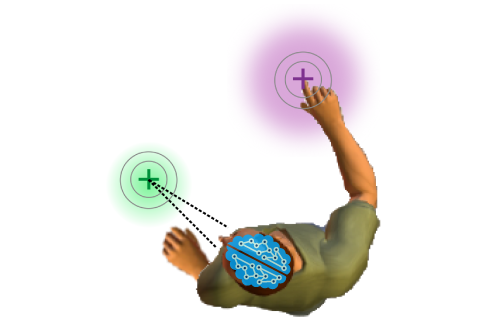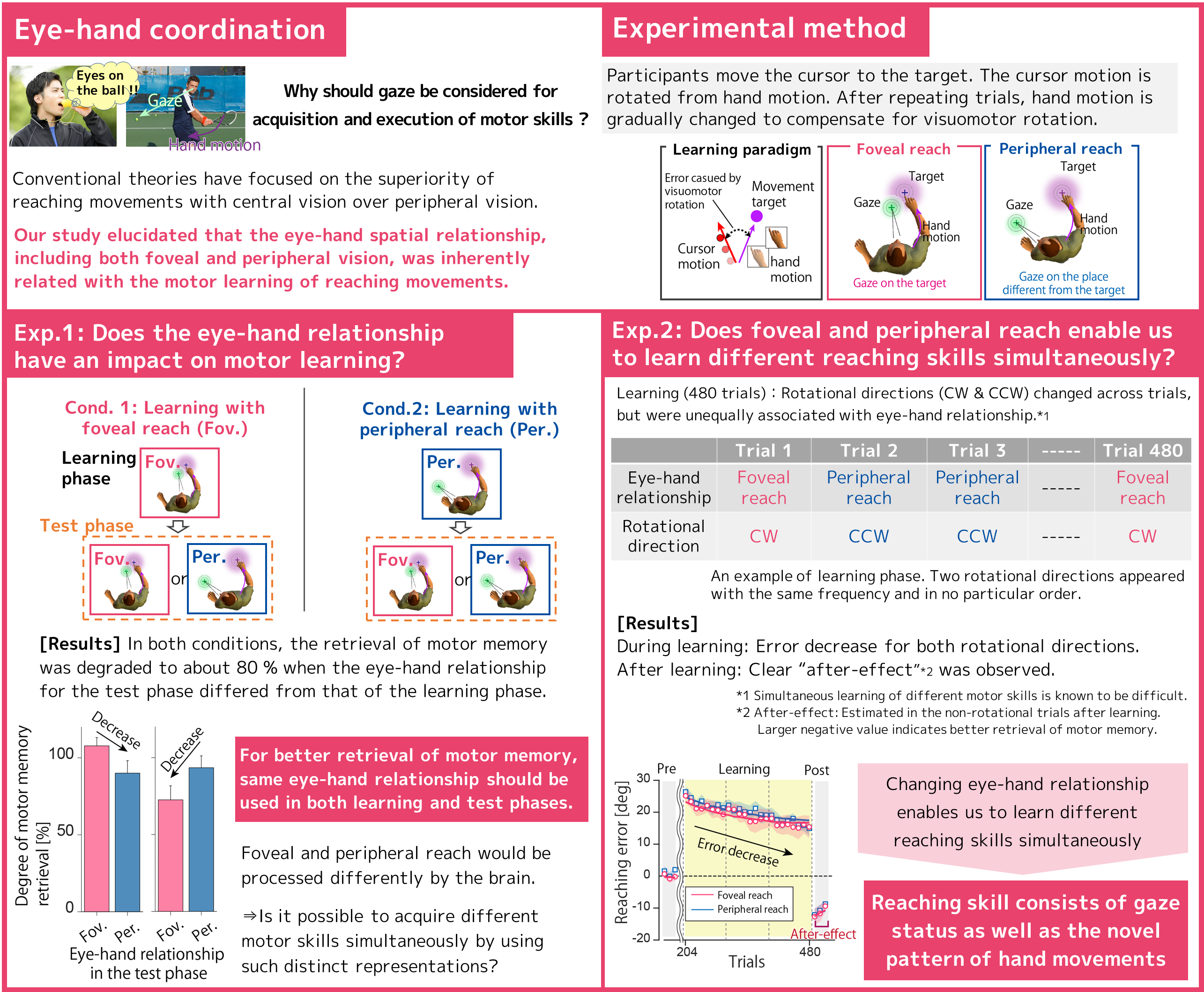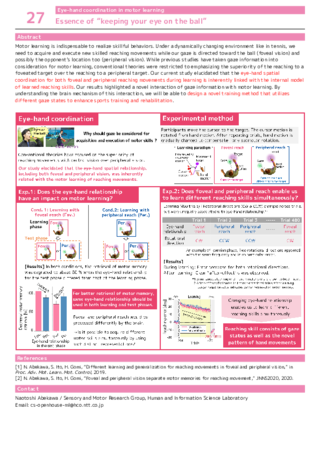| 27 |
Essence of “keeping your eye on the ball”Eye-hand coordination in motor learning 
|
|---|
Motor learning is indispensable to realize skillful behaviors. Under a dynamically changing environment like in tennis, we need to acquire and execute new skilled reaching movements while our gaze is directed toward the ball (foveal vision) and possibly the opponent’s location too (peripheral vision). While previous studies have taken gaze information into consideration for motor learning, conventional theories were restricted to emphasizing the superiority of the reaching to a foveated target over the reaching to a peripheral target. Our current study elucidated that the eye-hand spatial coordination for both foveal and peripheral reaching movements during learning is inherently linked with the internal model of learned reaching skills. Our results highlighted a novel interaction of gaze information with motor learning. By understanding the brain mechanism of this interaction, we will be able to design a novel training method that utilizes different gaze states to enhance sports training and rehabilitation.

[1] N. Abekawa, S. Ito, H. Gomi, “Different learning and generalization for reaching movements in foveal and peripheral vision,” in Proc. Adv. Mot. Learn. Mot. Control, 2019.
[2] N. Abekawa, S. Ito, H. Gomi, “Foveal and peripheral vision separate motor memories for reaching movement,” JNNS2020, 2020.
Naotoshi Abekawa / Sensory and Motor Research Group, Human and Information Science Laboratory
Email: cs-openhouse-ml@hco.ntt.co.jp


